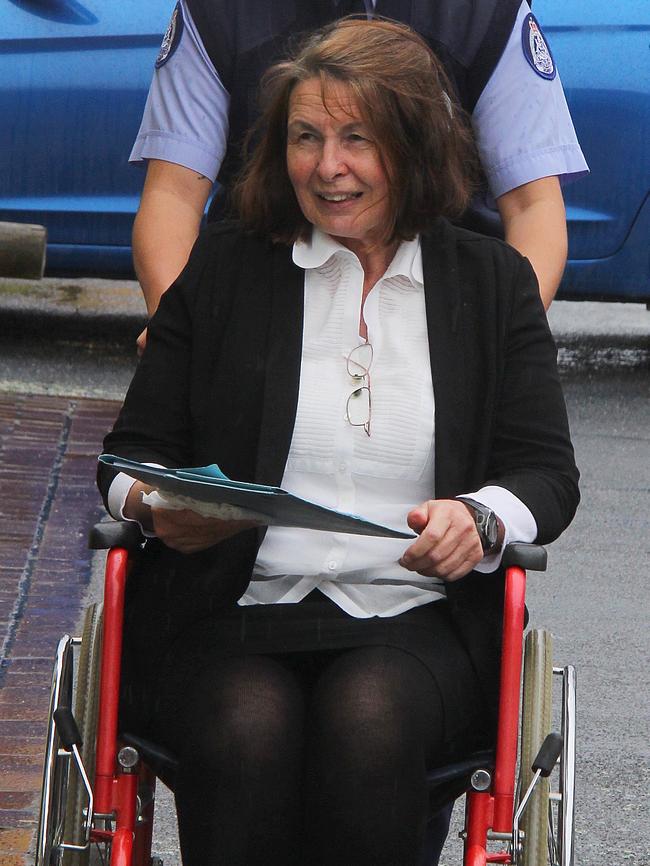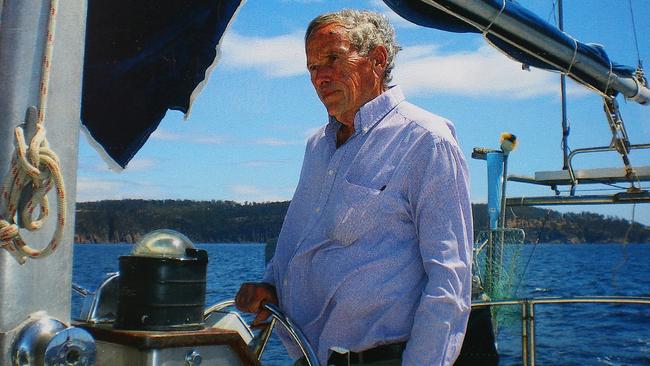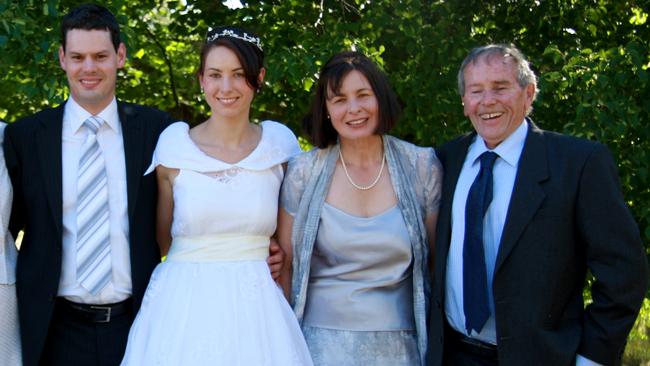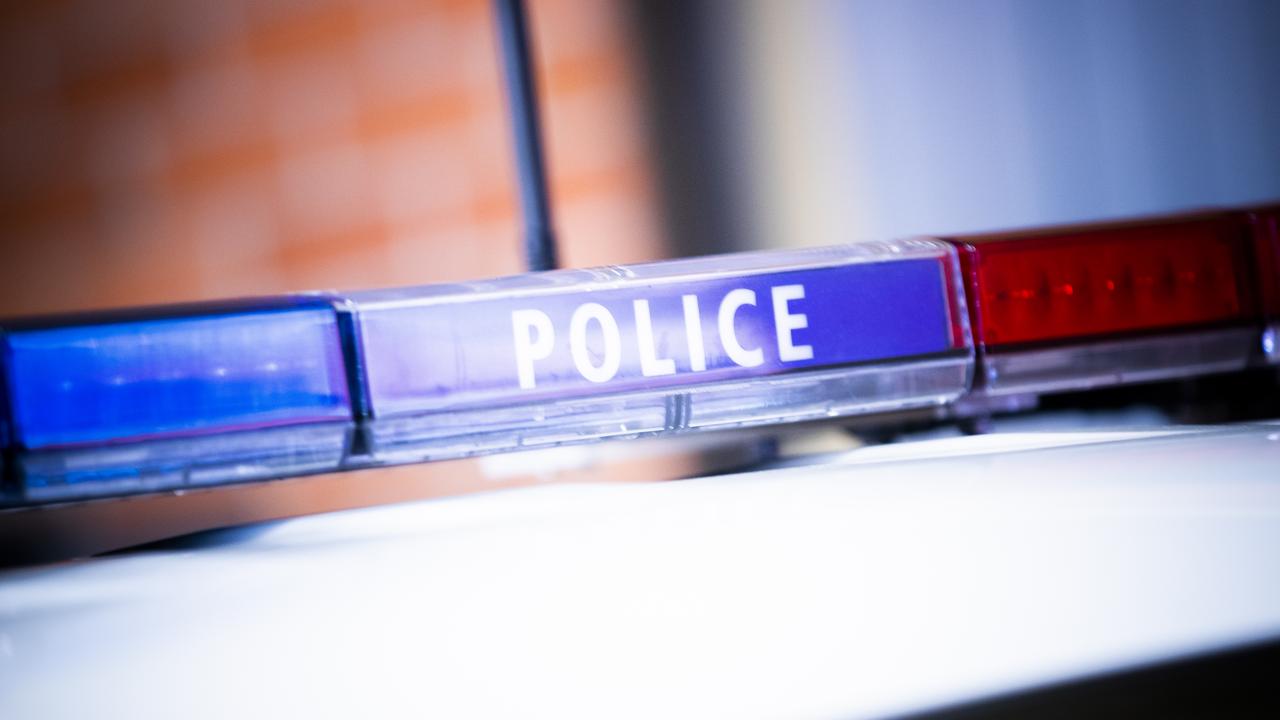Sue Neill-Fraser loses second appeal over Bob Chappell’s Australia Day 2009 murder
Sue Neill-Fraser has lost her second bid for freedom over the Australia Day 2009 murder of her partner Bob Chappell. EVERYTHING YOU NEED TO KNOW >>

Police & Courts
Don't miss out on the headlines from Police & Courts. Followed categories will be added to My News.
THE fate of Tasmania’s most famous female prisoner has been sealed.
Convicted murderer Sue Neill-Fraser will not walk free from prison this year, losing her second bid for freedom today after an almost nine-month wait.
The Tasmanian Court of Criminal Appeal - comprised of Justices Helen Wood, Stephen Estcourt and Robert Pearce - handed down their judgment this morning, revealing they’d neither acquit the 67-year-old grandmother nor order a retrial.
“After careful consideration, I have reached the conclusion the evidence relied upon by the appellant is not fresh, is not compelling,” Justice Wood said.
“There has not been a substantial miscarriage of justice”.
Neill-Fraser appeared crestfallen as she was led out of the docks.
But while Justices Wood and Pearce dismissed the appeal, Justice Estcourt was outnumbered in his conclusion that he would have allowed it and ordered a retrial.

Tuesday’s judgment will do little to assuage the debate that has divided Hobart since Neill-Fraser was first taken into custody in August 2009.
Her supporters have expressed their frustration at the decision, and at the legal process itself, as they continue to claim the testimony of key witness Meaghan Vass should have been taken at face value.
Neill-Fraser has been locked up since August 2009 for the Australia Day murder of her partner Bob Chappell and committing his body to a “sea burial” from their yacht, the Four Winds.
She has always protested her innocence.
She will be eligible to apply for parole as of August 2022, but her supporters believe she won’t leave the Mary Hutchinson Women’s Prison shy of her full 23-year sentence without an exoneration.

Neill-Fraser’s supporters frequently claim her incarceration is the worst miscarriage of justice in Australia since the case of Lindy Chamberlain, while those who support the jury’s original 2010 verdict believe the grandmother was motivated to murder her partner over his $1.3 million estate.
Neill-Fraser’s second appeal hearing was held in March this year after right-to-appeal legislation introduced in 2015 gave her a chance to try again on the basis of “fresh and compelling evidence”.
During the three-day hearing, with an all-star appeal team led by George Pell’s barrister Robert Richter QC, the evidence of Ms Vass was scrutinised to extraordinary effect.
Then a 15-year-old homeless girl, Ms Vass claimed she had been on-board the Four Winds when Mr Chappell - the chief radiation physicist at the Royal Hobart Hospital’s Holman Clinic - was murdered by her then boyfriend Samuel Devine.

But the following day, Ms Vass crumbled beneath the pressure of cross-examination by Director of Public Prosecutions, Daryl Coates SC, recanting her claims entirely.
She agreed she’d been “hounded” into giving evidence in favour of Neill-Fraser and that one of the people who’d pressured her had threatened to put her “in the boot” if she failed to give evidence exonerating the prisoner.
Defeated, Mr Richter interjected and asked the Full Bench to relieve Ms Vass of further witness duties as there was “not much point in any of it”.
“We are in a situation in which we concede that the evidence of Vass cannot support the notion of fresh and compelling evidence leading to a miscarriage of justice,” the star silk told the judges at the time.
EXPLAINED: Key players, timeline of Sue’s final bid for freedom
IT’S a case that has captured the national psyche – a woman who has spent more than a decade protesting her innocence over the murder of a man whose body has never been found.
Opinion couldn’t be more divided over Susan Blythe Neill-Fraser, and whether or not she truly did slaughter her partner Bob Chappell, committing his body to a “sea burial” from their yacht to the depths of the River Derwent.

Those who support the jury’s 2010 verdict believe Neill-Fraser is a cold-blooded, remorseless killer who murdered her partner of 18 years for a bite of his $1.3 million estate.
But her supporters argue the grandmother is innocent, that she “loved Bob deeply”, and that her conviction is Australia’s worst miscarriage of justice since the case of Lindy Chamberlain.
There might never be an end to the conjecture.
But one way or the other, Neill-Fraser’s fate is about to be sealed.
A FINAL BID FOR FREEDOM
In March of 2021, the Court of Criminal Appeal bulged at its seams as one of the most high-profile cases in Tasmanian criminal history began to play out its final chapter.
It’s Neill-Fraser’s second – and likely final – bid to clear her name after right-to-appeal legislation introduced in 2015 gave her a chance to try again on the basis of “fresh and compelling evidence”.

Her possible exoneration, or at least her right to a retrial, will hinge on a crucial point – whether or not she can prove Bob was attacked on their yacht in the presence of a homeless teenage girl.
Fast forward to Tuesday, November 30, 2021, the Court of Criminal Appeal will finally reveal the outcome of the appeal against her conviction for the murder of her partner Bob.
FOUL PLAY
It was Australia Day 2009 and Robert Adrian Chappell spent it working in the engine room of the Four Winds, which he’d recently purchased with Neill-Fraser.
The 65-year-old had been looking forward to his upcoming retirement from his role as chief radiation physicist at the Royal Hobart Hospital’s Holman Clinic, and taking trips out to sea with his life partner.
Neill-Fraser said she visited Bob aboard the vessel that day, but left him alone that afternoon, taking the tender back to shore.

Before the sun had even risen the following day, police received a call about a yacht sinking off Marieville Esplanade.
Officers that stepped aboard the 53-foot Four Winds found blood spatter on the stepladder and a knife lying on the floor.
They also discovered a toilet pipe had been cut and a stopcock opened, allowing sea water to gush in and flood the yacht for up to 12 hours prior.
Bob was nowhere to be seen.
STRANDS IN THE CABLE
In 2019, when Justice Michael Brett granted Neill-Fraser’s second bid for appeal, he described her trial as a “strands in the cable” case.
It’s a criminal law analogy often used to describe circumstantial cases where there is perhaps no body, no murder weapon, no direct evidence and no particular pieces of individually-damning evidence, yet but the totality of each “strand” bound together can build a strong case from which a jury can infer guilt.
In Neill-Fraser’s case, circumstantial evidence was used by then-Director of Public Prosecutions, Tim Ellis SC, to prove she’d attacked Bob in the saloon or wheelhouse of the Four Winds, winched him up to the deck, manoeuvred him onto the yacht’s tender, then dumped him overboard, weighing him down with an old-fashioned fire hydrant.

The case rested on the “wall of lies” she told after his disappearance.
These included a lie she’d told about going to Bunnings on the day in question.
Investigators reviewed hours of CCTV footage but found no trace of Neill-Fraser wandering the aisles as she’d claimed.
She then changed her story, telling police she’d been mistaken, with Mr Ellis proclaiming the truth was “seeping out”.
Neill-Fraser also claimed she’d spent the night alone in the couple’s West Hobart home, but later admitted she’d been to Sandy Bay Road after midnight.
She said she’d gone to check on her partner after his daughter Claire Chappell got a bad feeling that something bad was happening to her dad.
Former friend Phillip Triffett claimed at trial that in the years preceding, Neill-Fraser had asked him to help her kill her brother, then later Bob as their relationship deteriorated.
Mr Ellis argued Neill-Fraser was motivated by greed, as his death would have left her to inherit a large portion of his estate.
REASONABLE DOUBT
At her 2010 trial, Neill-Fraser’s defence barrister, the late David Gunson SC, said her case was “based entirely on suspicion and nothing else.”
He robustly attacked Mr Triffett’s credibility, arguing he faced unrelated criminal charges at the time, and had asked police whether his evidence would help with his case – but told it wouldn’t.

Mr Gunson argued Neill-Fraser’s lies didn’t come from a guilty place, but from shock at losing Bob, and had told mistruths about not visiting Sandy Bay that night in a bid to protect Claire.
The defence case also attacked the police investigation, claiming they’d developed “tunnel vision” that led them to exclude all other possible suspects.
Since her conviction, a large band of supporters have continued to rally in her support, including high-profile backers like Andrew Wilkie MP and Robert Richter QC.
In 2017, Mr Richter met with then-Premier Will Hodgman in a behind-closed doors meeting in which he requested the government launch an independent inquiry into the case.
In a surprise development on Friday, the prominent silk – who has previously represented Cardinal George Pell, underworld figure Mick Gatto and Hoddle Street massacre perpetrator Julian Knight – announced he would lead Neill-Fraser’s appeal in court in March.

FRESH AND COMPELLING
Neill-Fraser’s appeal will be argued on a singular ground, that there is fresh and compelling evidence, and this will be broken up into three key parts.
The first part will be the most powerful and important element and is based on claims that then-homeless 15-year-old girl Meaghan Vass was on board the Four Winds yacht when Mr Chappell was attacked.

The appeal will also look at evidence led during the 2010 trial, including questions over evidence surrounding DNA testing, luminol testing and a winching reconstruction Neill-Fraser’s team say is misleading.
Lastly, Neill-Fraser’s lawyers will argue a dinghy seen near the Four Winds at the time Bob was attacked was not the Four Winds’ tender.
Ms Vass, whose DNA was found on the Four Winds, previously gave an interview on 60 Minutes – an episode not aired in Tasmania – in which she claimed Bob was attacked by one of her male associates.
WIN OR LOSE
If her appeal fails, Neill-Fraser will be eligible to apply for parole in August 2022.
But her supporters say she won’t accept parole as it would be an acknowledgment of guilt, and that her only way out of the Mary Hutchinson Women’s Prison before her 23 years is up is exoneration.
Key supporter Rosie Crumpton-Crook also says that no matter the outcome, her backers won’t stop fighting for justice.
She said supporters would campaign for an independent judicial inquiry or commission of inquiry “to make sure this doesn’t happen again”.
WHAT IS THE FRESH AND COMPELLING EVIDENCE?
Sue Neill-Fraser’s second bid for appeal will be argued on the singular ground she has fresh and compelling evidence in support of her innocence.
MEAGHAN VASS: Neill-Fraser’s team will argue that “persons intent on criminal activity” travelled by boat to the Four Winds in order to commit burglary on the night of Bob’s death Meaghan Vass, a 15-year-old girl whose DNA was found on the yacht, denied at trial that she’d ever stepped foot on the yacht. But she has since made a statement – and given interviews with 60 Minutes and a former detective-turned-investigative journalist – recanting that. Ms Vass, now 27, says she went aboard the boat with two male associates and was present when one of the men attacked Bob. Ms Vass says Neill-Fraser wasn’t present at the time. There is no suggestion of wrongdoing by Ms Vass.
DNA: It was argued at trial that Ms Vass’ DNA could have been left onboard by “secondary transfer” – such as via the sole of a someone’s shoe while the case was being investigated. Neill-Fraser’s team has since enlisted a forensic scientist employed by Victoria Police to say this scenario was unlikely, and Ms Vass’ DNA would have been a “primary deposit” from her body when she was aboard the yacht.
LUMINOL: Neill-Fraser’s team will argue that evidence at the 2010 trial about luminol – a forensic chemical that glows in the presence of blood – was misleading. They will also argue a winching reconstruction on the Four Winds during the trial was misleading.
THE DINGHY: Finally, the appeal team will argue a dinghy seen near the Four Winds about the time Bob was attacked was not the Four Winds’ tender. They will argue it was not Neill-Fraser that made the fateful journey to the Four Winds on the night of Bob’s death.





